#Haughwout Building
Explore tagged Tumblr posts
Text
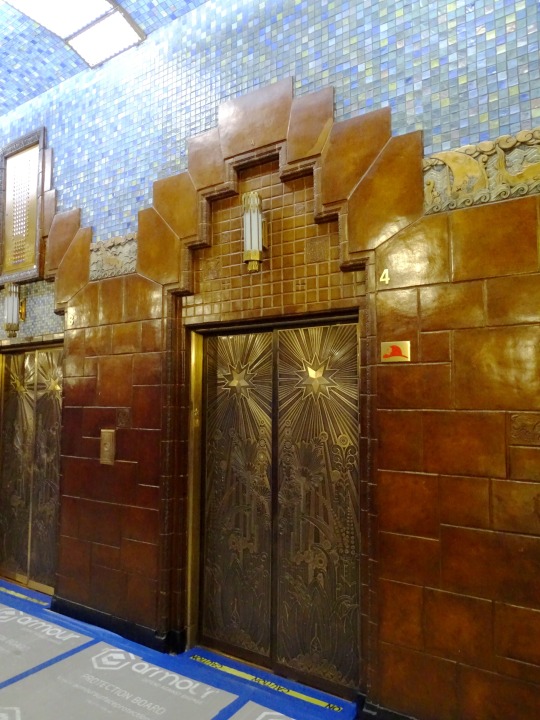
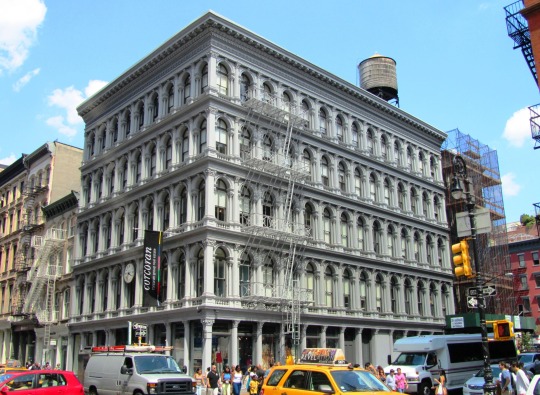
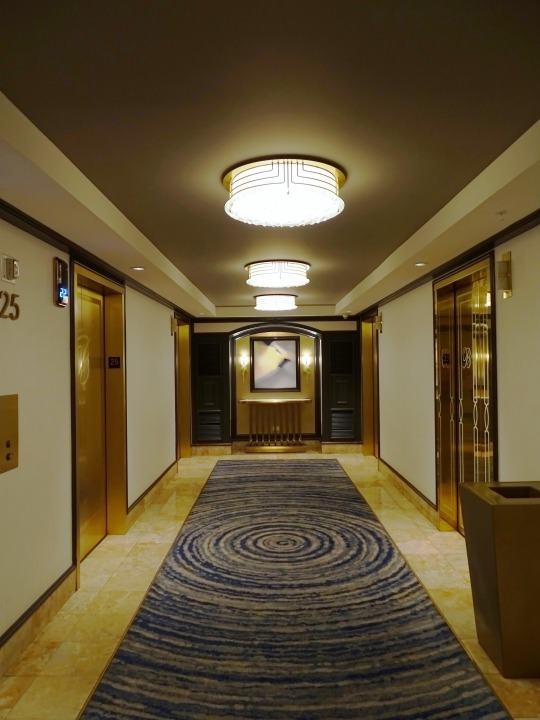
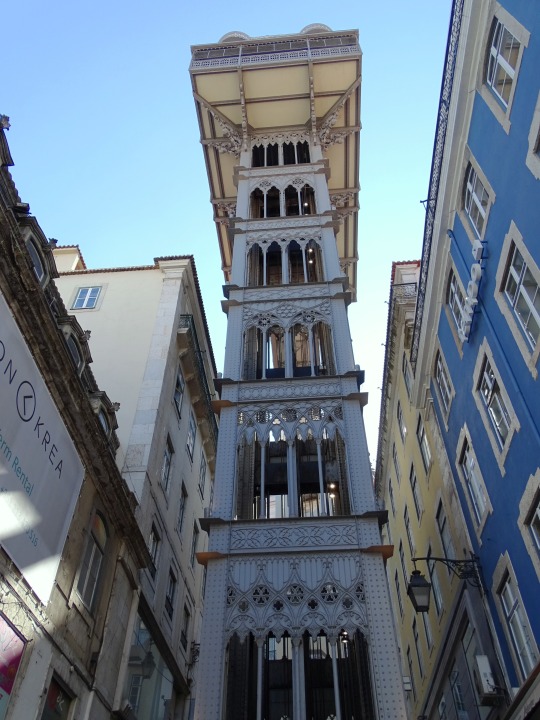


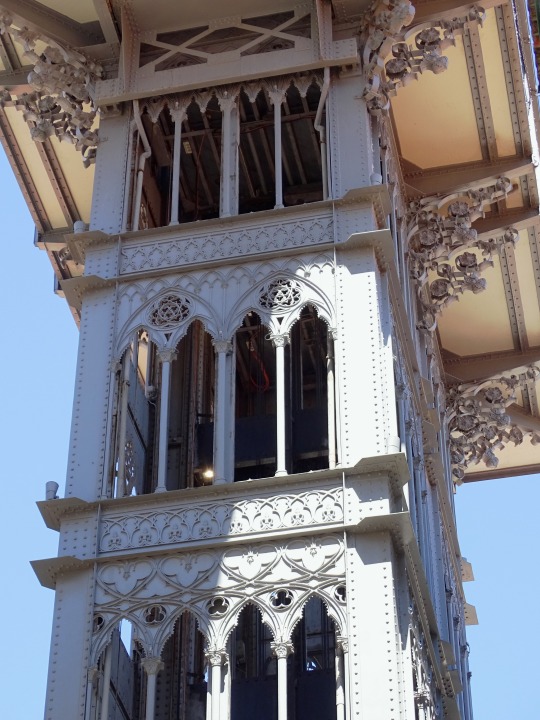
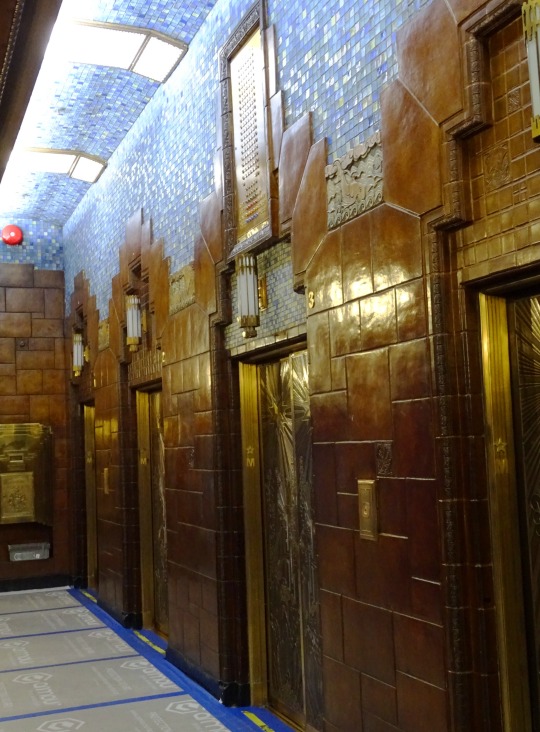

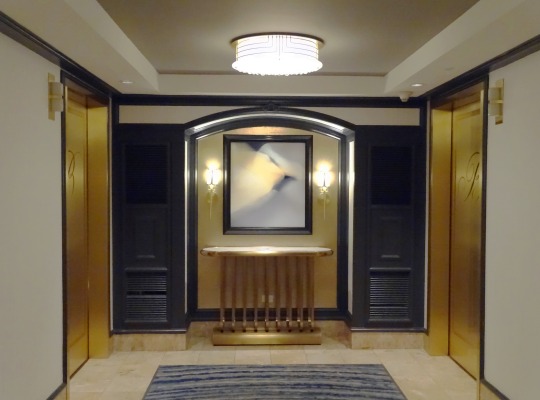
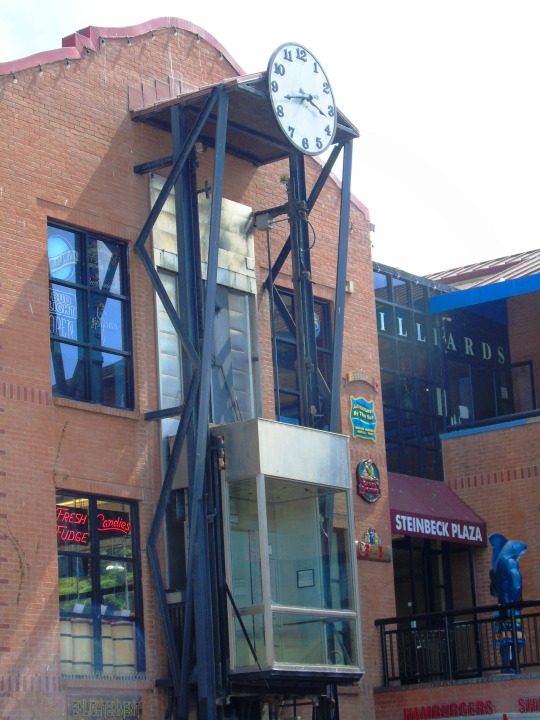

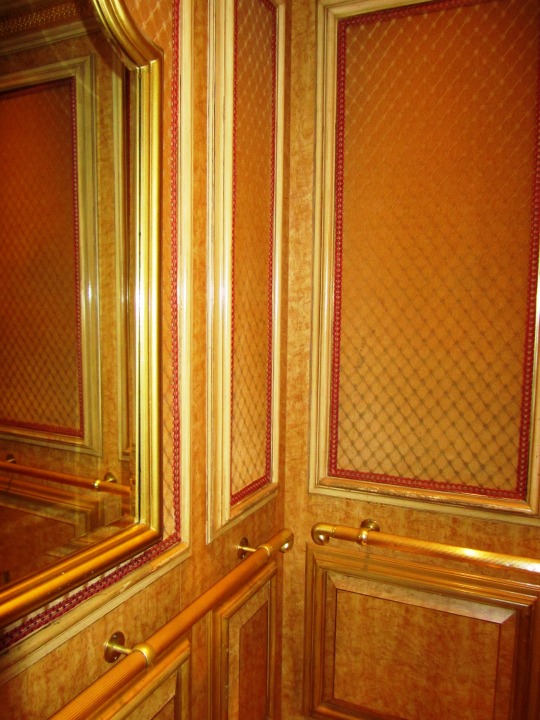

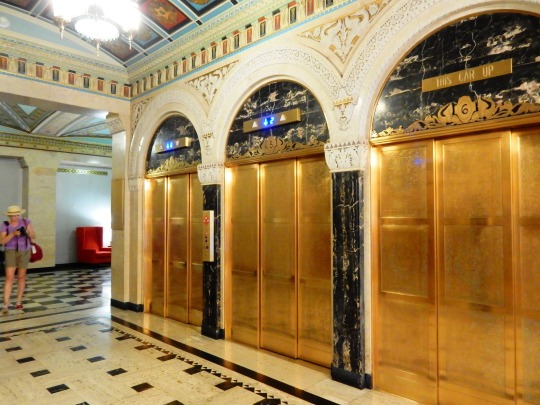
Elisha Otis’s first elevator is installed at 488 Broadway New York City on March 23, 1857.
#Elisha Otis#first elevator#installed#23 March 1857#anniversary#engineering#cityscape#Monterey#The Americana at Brand#Bellagio - Las Vegas Luxury Resort & Casino#US history#travel#vacation#original photography#tourist attraction#Vancouver#landmark#Americana at Brand#Glendale#elevator motor#Chelsea Market#E. V. Haughwout Building#USA#Canada#Lisbon#SoHo#Lower Manhattan#New York City#Santa Justa Lift by Raul Mesnier#Portugal
27 notes
·
View notes
Text

Haughwout Building, New York, Photo by Evelyn Hofer, 1965
270 notes
·
View notes
Text
Elevators Before Electricity: How They Worked in the 1800s
When we think of elevators today, we imagine sleek, high-speed machines gliding effortlessly between floors at the push of a button. But before the invention of electricity, elevators relied on entirely different mechanisms. The 1800s were a period of rapid industrial advancement, and early elevators played a crucial role in shaping modern cities and industry. So, how exactly did elevators work before the age of electricity?
Early Elevators: Powered by Steam and Hydraulics
Before electricity, most elevators in the 19th century were powered by steam or hydraulic systems. These early designs were primarily used for industrial purposes, such as lifting heavy materials in factories, warehouses, and mines. However, as urbanization progressed, elevators became essential for moving people as well.
Steam-Powered Elevators
Steam power was one of the first major advancements in elevator technology. These elevators operated using steam engines that drove a system of belts, gears, or pistons. The steam created pressure that moved a piston or wound a cable, lifting and lowering the elevator car. While effective, steam-powered elevators were often slow, bulky, and required a dedicated boiler, making them impractical for small buildings.
Hydraulic Elevators: A Game-Changer
As technology advanced, hydraulic systems emerged as a more practical alternative. Introduced in the mid-19th century, hydraulic elevators used pressurized water or oil to power a piston inside a vertical cylinder. When water or oil was forced into the cylinder, the piston pushed the elevator car upwards. To descend, the pressure was released, and the car would lower smoothly. The major drawback of early hydraulic elevators was that they required large underground cylinders as deep as the elevator shaft itself, making them expensive and impractical for taller buildings.
Elisha Otis and the Birth of the Safety Elevator
One of the biggest concerns with early elevators was safety. Without proper braking mechanisms, a snapped cable or mechanical failure could lead to disastrous falls. In 1852, American inventor Elisha Otis revolutionized the industry by developing the first safety elevator. His design included a fail-safe braking system that automatically engaged if the lifting cable snapped, preventing the car from plummeting.
To prove its reliability, Otis famously demonstrated his invention at the 1854 New York World's Fair by standing on a platform and cutting the lift cable himself—only to remain safely suspended in mid-air. This innovation paved the way for the widespread adoption of passenger elevators.
Early Passenger Elevators: A Luxury for the Wealthy
With Otis’ safety system in place, buildings began incorporating elevators to transport people, not just goods. The first passenger elevator was installed in 1857 at the Haughwout Building in New York City. This steam-powered elevator made it possible to construct taller buildings, changing the landscape of cities forever. However, passenger elevators were still considered a luxury, found mainly in upscale hotels, department stores, and the homes of the wealthy.
The Shift Toward Electric Elevators
By the late 1800s, electrical power was beginning to replace steam and hydraulic systems. The first successful electric elevator, developed by Werner von Siemens in 1880, marked the transition to the modern era of elevator technology. Electric elevators were safer, faster, and more efficient, making them the standard in urban architecture by the early 20th century.
Conclusion
Before electricity, elevators depended on steam and hydraulic power, requiring complex mechanical systems and large infrastructure. While early elevators were slow and costly, they laid the foundation for the high-speed, energy-efficient elevators we use today. Thanks to innovators like Elisha Otis, the safety and practicality of elevators improved dramatically, enabling the rise of skyscrapers and the modern cityscape.
0 notes
Text
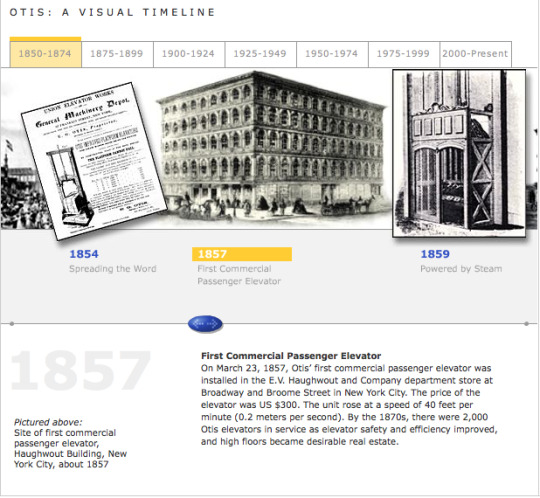
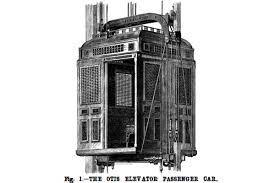
On This Day in New York City History March 23, 1857: The first commercial passenger elevator is installed by Elisha Graves Otis in the E.V. Haughwout Building. The Haughwout Building was home to a five-story department store at 488 Broadway on the corner of Broadway and Broome Street in what is today the SOHO neighborhood of NYC. The elevator came at a cost of $300 dollars which in today's dollars would cost $10,373.79.
What made Otis' elevator successful and revolutionary was the safety brake that prevented the elevator from falling. The creation of safe elevators led to building being built higher up into the sky. Life as we know it in vertical cities of today wouldn't be what they are without the Otis elevators.
#ElishaOtis #OtisElevators #HaughwoutBuilding #EngineeringHistory #ArchitecturalHistory #NewYorkHistory #NYHistory #NYCHistory #History #Historia #Histoire #Geschichte #HistorySisco
#Elisha Otis#Otis Elevators#Haughwout Building#Engineering History#Architectural History#New York History#NY History#NYC History#History#Historia#Histoire#Geschichte#HistorySisco
4 notes
·
View notes
Video
Cornice of the E. V. Haughwout Building by Michael Daddino Via Flickr: E.V. Haughwout & Co. was a dry-goods retailer who, in its day, was held in such esteem it supplied the Pierce and Lincoln white houses with china. The building that once housed its store from 1857 to 1870 has one New York's earliest surviving cast-iron fronts--according to historian Margot Gayle, the best--and also housed the world's first passenger elevator.
17 notes
·
View notes
Photo

On this day in 1857, Elisha Otis's Otis Elevator Company installed the world’s first "safety elevator", a commercial elevator designed for passenger use, at the Haughwout Building, a department store located at 488 Broadway in New York City.
After Elisha died in 1861, the company continued to operate under the leadership of his sons, Charles and Norton Otis. In 1862, the company began selling elevators internationally, starting in Canada, then expanding to Mexico and Europe as early as 1873. Sales offices were established in London in 1884.
This photograph documents the company’s work in England, after the Underground Electric Railways Company of London (a precursor of today's London Underground) purchased 170 electric elevators from the company and had them installed between 1905 and 1907. It shows the entrance of the elevator with an operator at the railway’s Hampstead station, captured on June, 1906.
Most of the images in the Hagley Library’s collection of Otis Elevator Company installation of electric lifts for the London Underground photographs (Accession 1970.176) show elevators and elevator equipment being installed at subway stations in London. The photographs are labeled by station and date. Most of the images show the equipment used to raise, lower, and brake the elevator, often already installed at the top of the elevator shaft or in a machine room. Other images feature workers installing or inspecting this equipment. Otis Elevator Company workers are also shown at a company store in London and at a "Bean feast" at Hampton Court. Finally, a few photographs like this one feature the completed elevator entrances' in the stations, complete with uniformed elevator operators and signs instructing patrons to "Wait here for Lifts.". To view this collection online now, visit its page in our Digital Archive by clicking here.
#otd#on this day#on this date#march 23#elisha otis#inventors#inventions#american inventors#history of invention#otis elevator company#safety elevator#elevator#elevators#london underground#London metropolitan railway#1850s#1900s#hampstead
26 notes
·
View notes
Text
Elevator Company in Vancouver
Elevator Company in Vancouver, similarly named lift, the car that goes during a perpendicular shaft to move passengers or cargo within a multistory house's levels. Most maximum smart elevators are driven by electrical motors, with the support of a counterweight, within wires and sheaves (pulleys). By clearing the thanks to more substantial buildings, the lift played an important role in shaping the characteristic urban topography of the many smart towns, particularly within the us , and agrees to fill an important part within the future city growth.

The tradition of lifting weights by automated means during construction services stretches back at the most limited to Roman times; the Roman author designer Vitruvius within the fast time BC reported training programs that worked pulleys and capstans windlasses, operated by human, animal, or water power. Steam pressure was wont to such materials in England by 1800. during this new 19th century, a water-powered lift was introduced, during which the program was connected to a plunger during a barrel sunk within the area below the handle to a base consistent with the shaft's length. The pressure was wont to the liquid within the barrel by a vapor pump. Following a sequence of sheaves was wont to increase the car's movement and reduce the plunger's depth. These methods used counterweights to support the car's weight, needing only sufficient power to support the load.
Before the middle-1850s, these systems were initially applied to freight elevators. The lower reliability of the lines worked at that point performed such lifting programs inadequate for customer use. When the USA, Included a security plan in 1853, he made the customer elevator likely. Otis’ device, confirmed at the brilliant palace statement in ny , organized a clamping system that seized the guideposts on which the car ran when pressure was discharged from the elevator rope. the primary customer conveyor was put into the military within the Haughwout unit Market in NY City in 1857; made by cloud power, it soared five accounts in but a second and was a particular success.
Revised versions of the cloud-driven Elevator Company in Vancouver arrived within the next three decades. Still, no critical advance secured place until the electrical motor's manual for elevator service within the middle-1880s and therefore the first industrial installation of an electronic passenger lift in 1889. within the Demarest Construction in NY City, this foundation utilized an electrical motor to form a turning drum within the construction foundation. The installation of power led to 2 more suggestions: in 1894, push-catch restrictions were added, and in 1895 a crane equipment was confirmed in England that used the power to the sheave at the peak of the handle; the importance of the vehicle and counterweight served to make sure adhesion. The traction-drive device made reasonable taller bars and more incredible speeds by eliminating the winding drum's limitations. In 1904 a "gearless" comment was calculated by adding the drive sheave right to the electrical motor's armature, making speed practically endless.
1 note
·
View note
Text
A Guide to the World's Most Iconic Skyscrapers
skyscraper, a very tall multistoried building. The name first came into use during the 1880s, shortly after the first skyscrapers were built, in the United States. The development of skyscrapers came as a result of the coincidence of several technological and social developments. The term skyscraper originally applied to buildings of 10 to 20 stories, but by the late 20th century the term was used to describe high-rise buildings of unusual height, generally greater than 40 or 50 stories.
The increase in urban commerce in the United States in the second half of the 19th century augmented the need for city business space, and the installation of the first safe passenger elevator (in the Haughwout Department Store, New York City) in 1857 made practical the erection of buildings more than four or five stories tall. Although the earliest skyscrapers rested on extremely thick masonry walls at the ground level, architects soon turned to the use of a cast-iron and wrought-iron framework to support the weight of the upper floors, allowing for more floor space on the lower stories. James Bogardus built the Cast Iron Building (1848, New York City) with a rigid frame of iron providing the main support for upper-floor and roof loads.

Britannica Quiz
Largest, Tallest, and Smallest Around the Globe Quiz
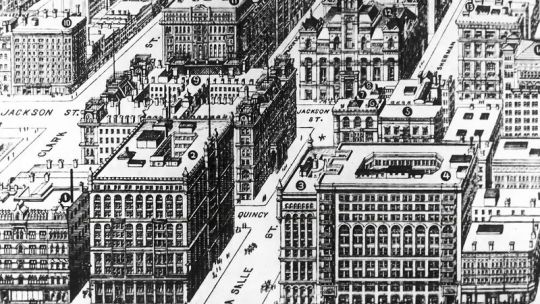
Discover real estate attorney Owen Aldis's formula for the profitable management of tall multistory office buildings, which informed the design of early skyscrapers
See all videos for this article
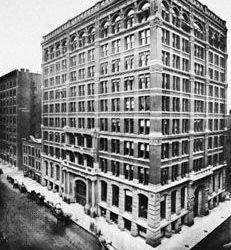
Home Insurance Company Building
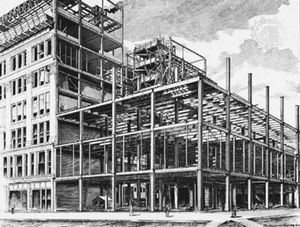
Fair Store
It was, however, the refinement of the Bessemer process, first used in the United States in the 1860s, that allowed for the major advance in skyscraper construction. As steel is stronger and lighter in weight than iron, the use of a steel frame made possible the construction of truly tall buildings. William Le Baron Jenney’s 10-story Home Insurance Company Building (1884–85) in Chicago was the first to use steel-girder construction. Jenney’s skyscrapers also first employed the curtain wall, an outer covering of masonry or other material that bears only its own weight and is affixed to and supported by the steel skeleton. Structurally, skyscrapers consist of a substructure of piers beneath the ground, a superstructure of columns and girders above the ground, and a curtain wall hung on the girders.
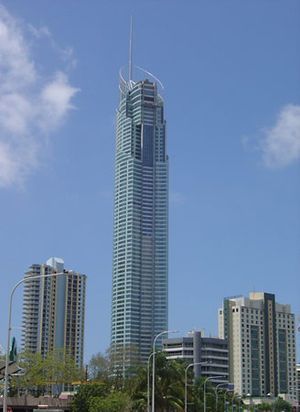
Gold Coast
As the population density of urban areas has increased, so has the need for buildings that rise rather than spread. The skyscraper, which was originally a form of commercial architecture, has increasingly been used for residential purposes as well.

Woolworth Building

Chrysler Building
The design and decoration of skyscrapers have passed through several stages. Jenney and his protégé Louis Sullivan styled their buildings to accentuate verticality, with delineated columns rising from base to cornice. There was, however, some retention of, and regression to, earlier styles as well. As part of the Neoclassical revival, for instance, skyscrapers such as those designed by the firm of McKim, Mead, and White were modeled after Classical Greek columns. The Metropolitan Life Insurance Building in New York City (1909) was modeled by Napoleon Le Brun after the Campanile of St. Mark’s in Venice, and the Woolworth Building (1913), by Cass Gilbert, is a prime example of neo-Gothic decoration. Even the Art Deco carvings on such towers as the Chrysler Building (1930), the Empire State Building (1931), and the RCA Building (1931) in New York City, which were then considered as modern as the new technology, are now viewed as more related to the old ornate decorations than to truly modern lines.
0 notes
Text
A Guide to the World's Most Iconic Skyscrapers
skyscraper, a very tall multistoried building. The name first came into use during the 1880s, shortly after the first skyscrapers were built, in the United States. The development of skyscrapers came as a result of the coincidence of several technological and social developments. The term skyscraper originally applied to buildings of 10 to 20 stories, but by the late 20th century the term was used to describe high-rise buildings of unusual height, generally greater than 40 or 50 stories.
The increase in urban commerce in the United States in the second half of the 19th century augmented the need for city business space, and the installation of the first safe passenger elevator (in the Haughwout Department Store, New York City) in 1857 made practical the erection of buildings more than four or five stories tall. Although the earliest skyscrapers rested on extremely thick masonry walls at the ground level, architects soon turned to the use of a cast-iron and wrought-iron framework to support the weight of the upper floors, allowing for more floor space on the lower stories. James Bogardus built the Cast Iron Building (1848, New York City) with a rigid frame of iron providing the main support for upper-floor and roof loads.

Britannica Quiz
Largest, Tallest, and Smallest Around the Globe Quiz

Discover real estate attorney Owen Aldis's formula for the profitable management of tall multistory office buildings, which informed the design of early skyscrapers
See all videos for this article
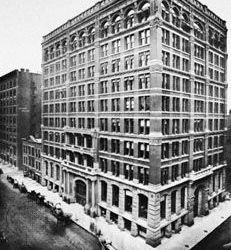
Home Insurance Company Building

Fair Store
It was, however, the refinement of the Bessemer process, first used in the United States in the 1860s, that allowed for the major advance in skyscraper construction. As steel is stronger and lighter in weight than iron, the use of a steel frame made possible the construction of truly tall buildings. William Le Baron Jenney’s 10-story Home Insurance Company Building (1884–85) in Chicago was the first to use steel-girder construction. Jenney’s skyscrapers also first employed the curtain wall, an outer covering of masonry or other material that bears only its own weight and is affixed to and supported by the steel skeleton. Structurally, skyscrapers consist of a substructure of piers beneath the ground, a superstructure of columns and girders above the ground, and a curtain wall hung on the girders.

Gold Coast
As the population density of urban areas has increased, so has the need for buildings that rise rather than spread. The skyscraper, which was originally a form of commercial architecture, has increasingly been used for residential purposes as well.

Woolworth Building

Chrysler Building
The design and decoration of skyscrapers have passed through several stages. Jenney and his protégé Louis Sullivan styled their buildings to accentuate verticality, with delineated columns rising from base to cornice. There was, however, some retention of, and regression to, earlier styles as well. As part of the Neoclassical revival, for instance, skyscrapers such as those designed by the firm of McKim, Mead, and White were modeled after Classical Greek columns. The Metropolitan Life Insurance Building in New York City (1909) was modeled by Napoleon Le Brun after the Campanile of St. Mark’s in Venice, and the Woolworth Building (1913), by Cass Gilbert, is a prime example of neo-Gothic decoration. Even the Art Deco carvings on such towers as the Chrysler Building (1930), the Empire State Building (1931), and the RCA Building (1931) in New York City, which were then considered as modern as the new technology, are now viewed as more related to the old ornate decorations than to truly modern lines.
0 notes
Text
Did you know..
Did you know… … that today is Passenger Elevator Day? In 1857, Elisha Otis installed the first passenger elevator in the five-story E.V. Haughwout Building in New York City. While elevators had been used prior to this time, they weren’t used for passengers until Otis invented a device to prevent the elevator from falling if the cable broke. The original elevator is still in place and is in…
View On WordPress
0 notes
Text






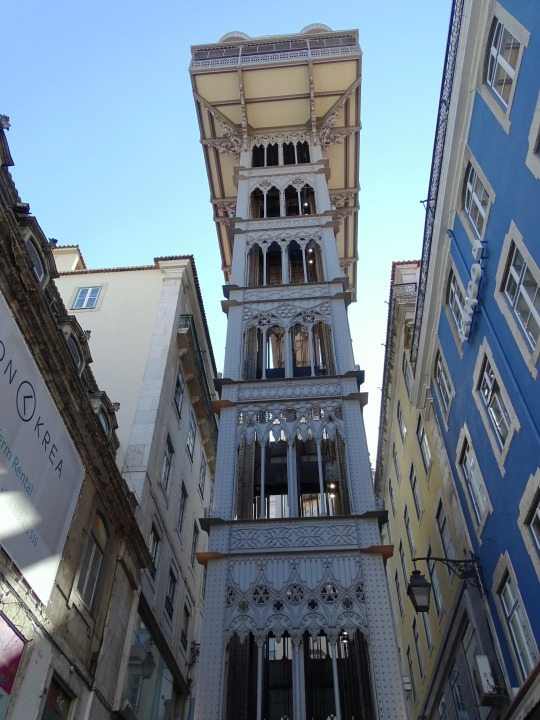

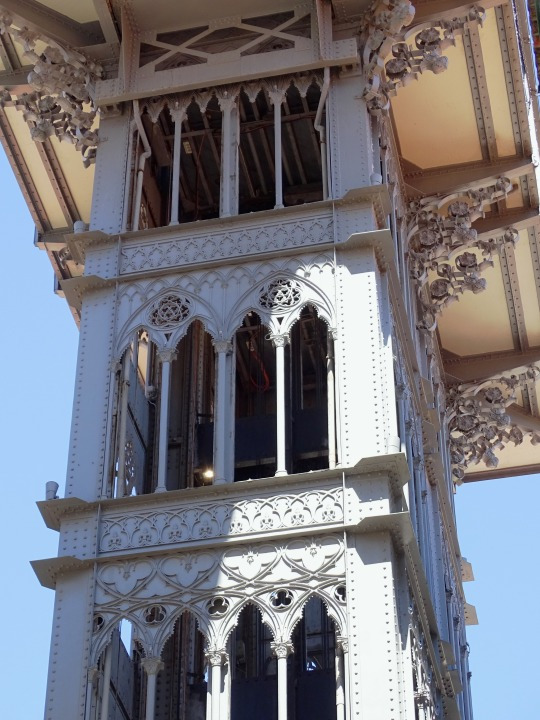

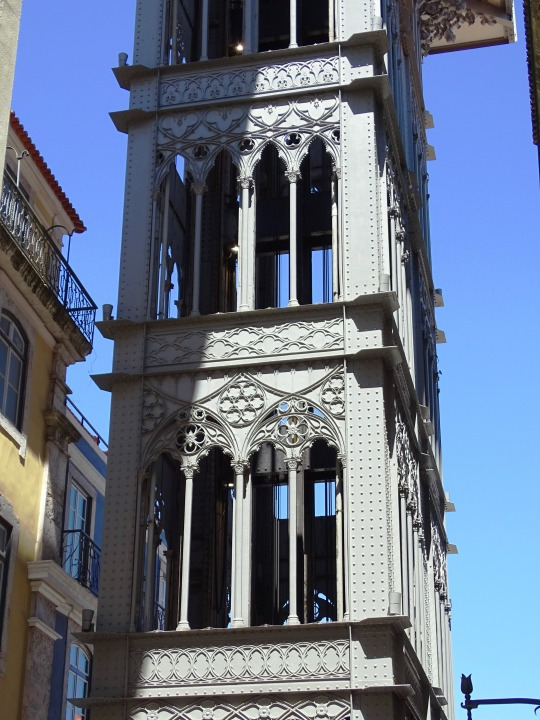
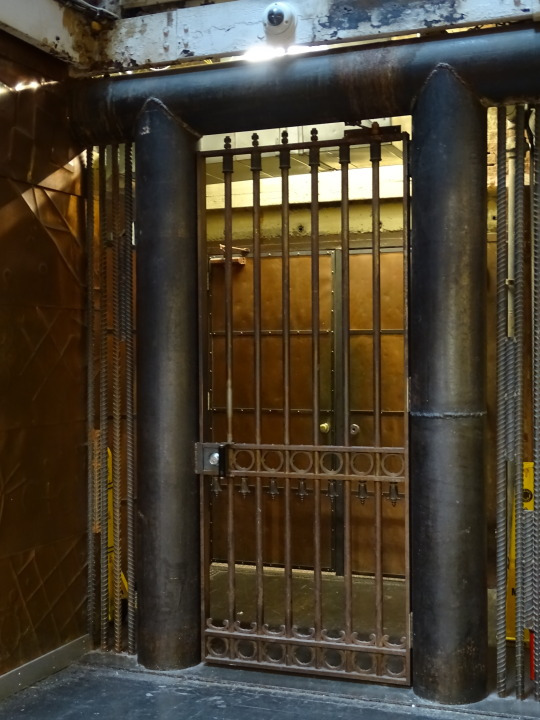

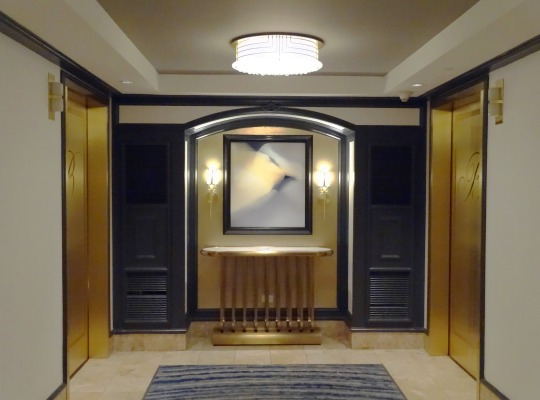

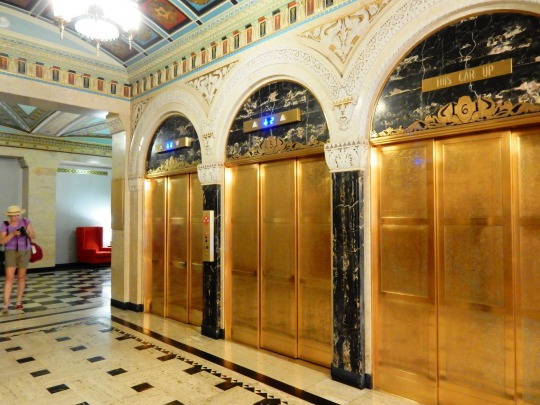
Elisha Otis’s first elevator was installed at 488 Broadway New York City on March 23, 1857.
#Edmonton#Alberta#Elisha Otis#first elevator#installed#23 March 1857#anniversary#engineering#cityscape#Monterey#The Americana at Brand#Bellagio - Las Vegas Luxury Resort & Casino#US history#travel#vacation#original photography#tourist attraction#Vancouver#landmark#Americana at Brand#Glendale#Chelsea Market#E. V. Haughwout Building#USA#Canada#Lisbon#Lower Manhattan#New York City#Santa Justa Lift by Raul Mesnier#Portugal
3 notes
·
View notes
Text

1939. Chatham Square. Top of City Municipal Building visible and Haughwout Building with a painted building sign for Simpson Pawn and Loan.
Arnold Eagle, Photog.
0 notes
Text
Ông chủ Zara lần đầu tiết lộ khối bất động sản

Amancio Ortega đang sở hữu số tài sản trị giá 58,5 tỷ USD, trong đó riêng nhà đất vào khoảng 17,2 tỷ USD.
Theo thông báo hôm nay (7/7) của Pontegadea - doanh nghiệp sở hữu 59,3% hãng thời trang Inditex (công ty mẹ của Zara), ông chủ Zara Amancio Ortega hiện có khoảng 15,2 tỷ euro bất động sản (17,2 tỷ USD). Đây là lần đầu tiên khối bất động sản của Ortega được tiết lộ. Theo Bloomberg, con số này giúp ông chủ Zara trở thành người có danh mục nhà đất lớn nhất trong giới siêu giàu ở châu Âu.
Năm ngoái, thông qua các công ty con thuộc Pontegadea, Ortega đầu tư 2,1 tỷ euro vào bất động sản. Công ty có doanh thu khoảng 1,8 tỷ euro năm 2019, bao gồm 1,64 tỷ euro cổ tức từ Inditex và 621 triệu euro từ các bất động sản.

Tỷ phú Amancio Ortega hiện là người giàu nhất châu Âu. Ảnh: AP
Những năm gần đây, Ortega đa dạng hóa việc kinh doanh để bảo toàn tài sản. Vì thế, ông chọn đổ tiền vào địa ốc. Tỷ phú đã mua tòa nhà Haughwout Building nổi tiếng ở Manhattan và tòa cao văn phòng cao nhất Miami.
Năm ngoái, doanh nghiệp của ông hoàn cũng thành thương vụ 72,5 triệu USD mua một khách sạn trung tâm Chicago. Trước đó, họ còn mua một tòa nhà ở khu trung tâm Washington và hai tòa văn phòng ở Seattle.
Ortega năm nay 84 tuổi, sở hữu khối tài sản trị giá 58,5 tỷ USD, theo Bloomberg Billionaires Index. Vì Covid-19, từ đầu năm, khối tài sản của tỷ phú Tây Ban Nha đã giảm 20%. Inditex phải đóng nhiều của hàng khiến cổ phiếu doanh nghiệp này giảm 22%.
Tú Anh (theo Bloomberg)
0 notes
Video
Top of the E.V. Haughwout Building by Michael Daddino Via Flickr: E.V. Haughwout & Co. was a dry-goods retailer who, in its day, was held in such esteem it supplied the Pierce and Lincoln white houses with china. The building that once housed its store from 1857 to 1870 has one New York's earliest surviving cast-iron fronts--according to historian Margot Gayle, the best--and also housed the world's first passenger elevator.
Modeled on a 16th-century Venetian library
#NY#NYC#New York#New York City#Manhattan#Downtown Manhattan#SoHo#SoHo Historic District#SoHo-Cast Iron Historic District#Broadway#Broome Street#E.V. Haughwout Building#Haughwout Building#488-492 Broadway
9 notes
·
View notes
Photo

Haughwout Building, 1857, where Mary Todd Lincoln bought exorbitantly expensive china and flatware for the WHite House
0 notes
Text
How New York City's First Elevator Revolutionized Real Estate
Not far from the Apartment Therapy offices in New York City is the five-story E.V. Haughwout building. It wouldn't be difficult to walk to the top floor, but in 1857, you wouldn't have had to because this is the site of the very first commercial elevator in New York City, manufactured by (who else?) Elisha Otis. Here's how it changed everything.
READ MORE »
from Apartment Therapy | Saving the world, one room at a time http://ift.tt/2EAevUu
0 notes